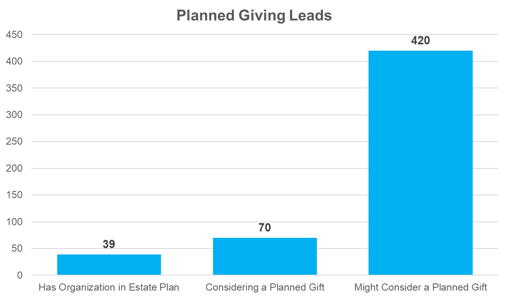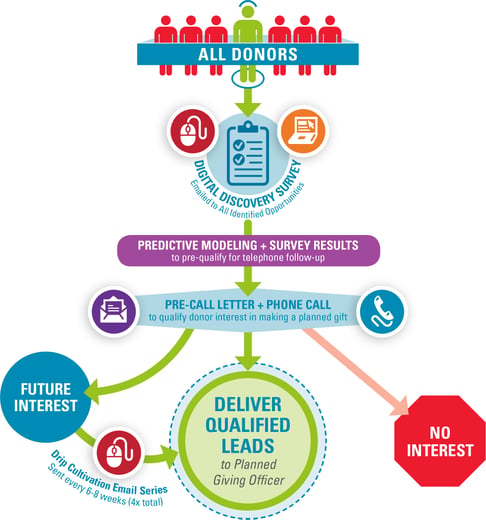
Filling The Salvation Army’s Planned Giving Opportunity Gap
When I was the Director of Development for The Salvation Army in Washington, D.C., we received a large bequest from a local donor. The gift was a surprise, and there was no record of the donor’s intent to name The Salvation Army in her estate plan.
This experience isn’t unique to The Salvation Army or other nonprofit organizations. These unexpected gifts are a blessing, but also point to an underlying challenge. According to The Shelter Company, 33 percent of Americans are willing to consider a charitable bequest, but only 22 percent say they have been asked for a planned gift. This is an opportunity gap that needs to be filled.
A Planned Giving Strategy for The Salvation Army
In 2018, TrueSense began working with The Salvation Army in multiple territories to uncover planned gifts in their donor file. Our Donor Engagement Team created a multichannel strategy for identifying and qualifying strong planned-giving leads.
In the most recent campaign, a total of 38 bequests were identified with a total value of $1.8 million. And we identified an initial 529 prospects for planned giving cultivation.

Here’s How It Works
The planned giving lead-generation program uses two discovery methods to uncover prospects.
The first approach is to use an email survey that goes out to the entire donor audience. This approach allows us to uncover leads that don’t fit the typical profile of a planned giving prospect, and it gives us important survey feedback on the background and motivations of the donor. The survey responses are available to the planned giving team at the end of the campaign for insights into the donor’s motivation and demographic information. The email survey also uncovers a significant pool of donors who have named the organization in their estate.
The second discovery method is to utilize predictive modeling to rank a pool of prospects. We start by identifying a pool of donors with high giving loyalty, and then use a variety of data sources (length of time in their home/community, charitable-giving index and wealth, etc.) to rank the entire list of donors. In our most recent campaign, we identified 22,000 loyal donors for the predictive modeling phase and selected 2,000 prospects for telephone calls.

The next step of the campaign is to call the the top-ranked prospects from the digital survey and predictive modeling. This process is essential to creating warm leads who have demonstrated a willingness to be engaged in person, producing qualified leads for planned-giving officer cultivation. Since timing is a key factor in the identification and cultivation of a planned giving prospect, we also provide direct feedback on leads who are interested, but would like to discuss their options later. For the donors with future interest, a series of drip emails engage the donor for 6-8 weeks, leading up to an invitation for an in-person meeting.
In addition to delivering qualified leads for planned-giving officers, the program has additional benefits that can create value across fundraising programs.
4 Benefits of Planned-Giving Lead-Generation Calling
- Our modeling process identifies the most loyal donors, and ranks them based on their planned-giving value. During the lead-generation program, we are able to contact a small number of these donors, and the ranking provides guidance for future campaigns to engage the donors who were not reached.
- Every call begins with a thank-you message. We are calling the organization’s most loyal donors, and it is a wonderful opportunity to thank them for their giving.
- The survey results and telephone notes provide valuable insight into an individual donor’s motivation for giving. All the data is delivered to the organization for future use.
- We record every call, so planned-giving officers can receive an audio file of them for advance preparation.
Our experience to date points to incredible value in The Salvation Army’s donor files. Investing in a systematic lead-generation program can help fuel gains from a funding source that is vital to The Salvation Army’s long-term sustainability. It is also a reminder of the incredible generosity of Salvation Army donors!
Wondering how our planned giving program will work in your Division or command? Click here to schedule a meeting with Claire Waiksnoris and learn more!
